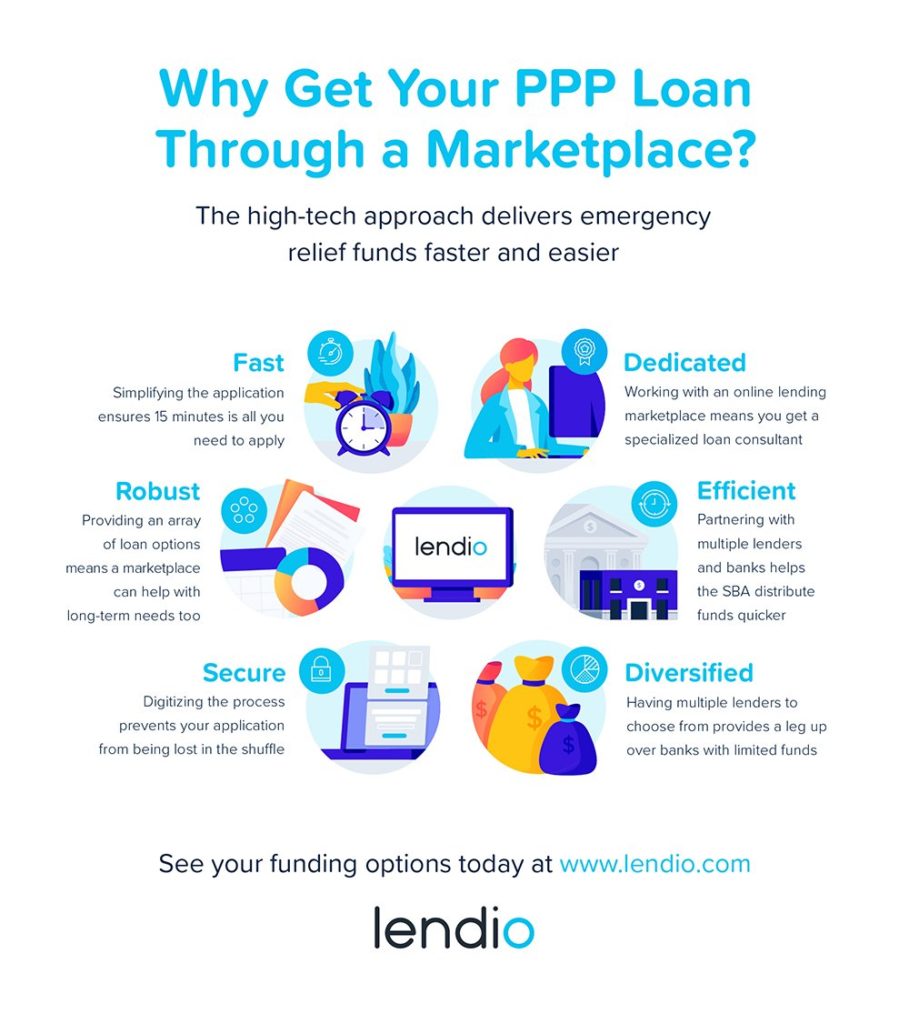It’s no secret that times are tough for small businesses. Revenues have taken a nosedive, if not flat-lined. Unemployment has skyrocketed as restaurants, salons, gyms and other businesses have had to shut their doors. And possibly most disconcerting of all, is the uncertainty of when it will end. The good news, however, is that help and relief are on the way.
With the passing of the CARES Act in late March, small business owners around the country have begun to apply for relief options in the form of Economic Injury Disaster Loans (EIDL) and the Paycheck Protection Program (PPP). Both offer cost-effective funding, with one difference: the speed at which a business will receive the funds. It is anticipated that the PPP loans will be deposited into business owners’ accounts right away. EIDL funds, on the other hand, could take anywhere from 30 to 90 days.
One big question for many small business owners is where and how to apply for a PPP loan. Due to the fact that the SBA and U.S. Treasury have opened the program to include more financial institutions than ever, borrowers have a lot more options including online lending marketplaces. As speed and access become more and more important, a marketplace is an efficient, streamlined option for business owners to gain access to their share of the available relief funds.
What Is a Marketplace?
Online lending marketplaces may be less familiar to many business owners who are used to doing business with banks and credit unions; however, over the last decade or so, online marketplaces have reinvented how lending can take place. Marketplaces expand a business owner’s options and chances of receiving funding, and the marketplace concept and experience is one most users are already familiar with—even if they don’t know it.
A simple way of thinking about a loan marketplace is to use a travel analogy. Travel sites like Kayak or Expedia offer similar user experiences. Travelers submit a destination, travel dates and any other desired criteria, and then options from across the internet and from multiple providers generate in one place. Travelers can then select the best options for their vacations.
Online lending marketplaces operate with a similar flow. A business owner fills out a single application, and then a highly-intuitive algorithm finds the best loans and lenders for the borrower. The business owner can then evaluate the loan options, terms and speed of funding for each offer and select the best one. The best marketplaces also offer an element of human interaction, where a loan consultant works with business owners one-on-one to gather the proper documents, answer questions and help select the best loan option.
Where Did Marketplaces Come From?
Ironically, the first lending marketplaces were born out of another crisis. Following the Great Recession, capital was extremely hard to come by, yet small business owners still needed options for financing. And when banks weren’t willing to dip their toes back in the lending waters, other lenders emerged. The only piece missing was a way to connect those online lenders with interested borrowers and thus, lending marketplaces were born.
Not only did this new technology and model help many businesses weather the 2008 recession, lending marketplaces have continued to grow in popularity over the last decade.
Now, as traditional lenders once again limit their credit boxes, and small businesses everywhere are in dire need of capital to get by, the online lending marketplace can flex its technological muscles.
It is estimated that over the next 90 days, around 30 million small business owners will be applying for capital, both for standard cash flow needs as well as coronavirus relief. While many business owners will likely turn to their bank for help, some may find their financial institution of choice is not participating in the government programs, or perhaps is unable to meet the overwhelming demand. For example, Bank of America was one of the first banks to begin accepting applications for PPP loans, but in order to apply, business owners needed to have both a bank account and a Bank of America credit card. Similarly, Wells Fargo quickly announced it had met its cap of $10 billion, which it restricted to nonprofits as well as small businesses with fewer than 50 employees.

Why Use a Marketplace?
Traditionally, small business owners had to physically go to financial institutions and plead their case, proving their worthiness to be given a loan. The paperwork and hoop-jumping was tedious, time consuming, and inefficient because if they didn’t get a loan, they’d have to start over at another institution.
Marketplaces resolve many of those difficulties, leveling the playing field for business owners who don’t have the time or resources to go from bank to bank applying for capital. The process allows one application to be used amongst a robust and diverse group of curated lenders, saving both time and effort. And now more than ever, as speed and efficiency become vital for relief funding, quick access to these funds will make all the difference for business owners at risk of closing their doors for good.
The best marketplaces also take a consultative approach and offer personal advisors who can walk you through the application process, help you gather the right documentation to ensure your application doesn’t get rejected, and process your application digitally to ensure it doesn’t get lost in the shuffle.
As millions of business owners find themselves in need of relief capital, the lending industry will be pushed to its limits. As of now, there are funds still available. However, as time moves on and speed becomes more and more important, it may be worthwhile for business owners to look beyond the confines of traditional financial institutions and explore the opportunities that a marketplace provides.
Image: lendio.com
